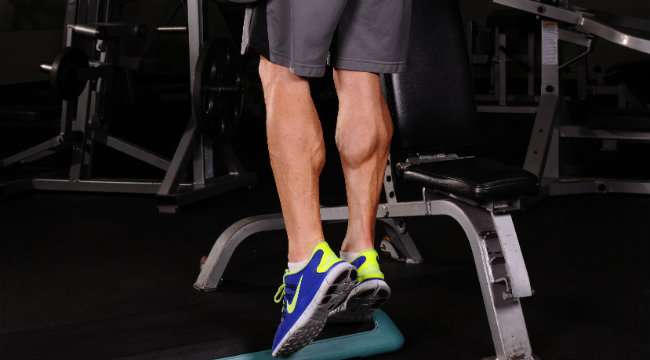28-Days-to-Lean Meal Plan
With the right plan and the right discipline, you can get seriously shredded in just 28 days.
Read article
I envy those bodybuilders who rarely need to do a calf raise or a wrist curl, and still have thickly developed forearm and calf muscles. However, lack of genetics isn’t always the culprit when it comes to having less-than-impressive calves and forearms.
It’s also because these body parts are trained as an afterthought rather than as major muscles. So if your parents didn’t pass down the Erik Fankhouser calf gene or the Phil Heath forearm gene, it doesn’t mean you can’t still build formidable amounts of muscle in these body parts. Sometimes it’s the hardest and smartest workers that actually come out ahead of the genetically gifted.
The forearms are heavily recruited in every single upper body exercise that you do. This makes them very tough and very resilient, which unfortunately makes it harder to affect their hypertrophy. Simply pumping them up is not enough to get them growing, so you need to think in terms of bombarding the forearms with tremendous intensity and varying stimuli. One of the best ways to accomplish this is to utilize my Power, Rep Range, Shock method of training. This method is effective because it’s a cyclical program that has you change training protocols week to week. It’s exactly what you want to do when looking to forge some serious forearms. Here is a typical 3-week forearm blitz using the Power, Rep Range, Shock method.
Barbell wrist curls…3 x 6-8
Reverse curls…3 x 6-8
Barbell behind the back wrist curls…2 x 9-12
Seated hammer curls…2 x 13-15
Reverse barbell wrist curls…2 x 16-20
Superset: Reverse barbell wrist curl/Incline hammer curl…2 x 10-12 each
Dropset: Barbell wrist curls…1 x 10-12, drop wt. 30%, 6-8 more
Plate holds (between your fingers and thumb, pinch grip a 45 lb. plate and hold by your sides as long as possible)…1 x maximum
Once you complete the three weeks, go back to the beginning, but shuffle up the exercises a bit.
If your forearms are considerably less developed than your upper arms you might want to train them twice per week. Another way to give the forearms a boost in size is to avoid using wrist straps as much as possible, so the forearms are forced to squeeze the bar or dumbbells harder in order to hold the weight.

Similar to forearms, the calves can also be quite resistant to growth. Every time you take a step the calves are activated, and are burdened with carrying around your bodyweight all day long. This means that you must attack the calves if they are to have any reason to increase in size and strength. Conventional training simply will not do when it comes to calves, so I have listed below some unique methods for sending a wake-up call to those stubborn calf muscle fibers.
1. For a period of 2-4 weeks train your calves on a daily basis before returning to your normal program. Use about 4-6 sets per workout – using a different exercise each day.
2. Every night before you go to bed do a set of 100 slow, hard-squeezing standing calf raises with just your bodyweight. Go for maximum burn.
3. Wherever it is possible, walk around on your tiptoes rather than your flat feet.
4. Every time you encounter a staircase do a calf raise up each step. On the way down step onto the ball of your foot, as this will act almost like a plyometric movement for your calves.
5. Try two calf workouts per week – one with very heavy weights for sets of 4-6 reps and one with very light weights for sets of 25-50 reps. This will attack fibers that you probably have not been hitting with conventional workouts.
6. Do like Arnold and train calves in your bare feet. This will increase the range of motion for any calf movement, and will force a very intense contraction.
Don’t use all of these methods at once, or your calves could end up over trained, which will of course not contribute to growth. Pick 2 or 3 items from the above list and change things up every few weeks.
If you truly want to build the muscles below the elbows and below the knees, you must use what you have above your neck and in your chest…your head and your heart. Training both smart and with passion is what truly makes a champion, and helps overcome whatever deficit we might have in the genetic department.